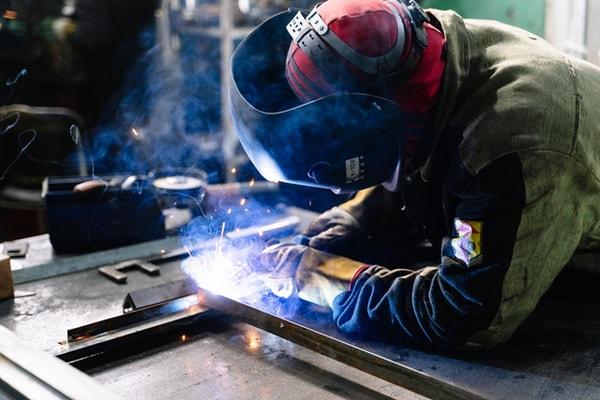Comprehending Welding WPS: Comprehensive Overview for Welders
Comprehending Welding WPS: Comprehensive Overview for Welders
Blog Article
Understanding Welding WPS Requirements: Ideal Practices and Techniques for Quality Welds
In the world of welding, understanding Welding Treatment Requirements (WPS) criteria is an essential component that directly influences the high quality and stability of welds. Sticking to these standards guarantees consistency and reliability in welding outcomes. Nevertheless, attaining excellence in welds exceeds merely comprehending the standards; it involves implementing ideal techniques and methods that elevate the craft to a level of accuracy and skill that sets apart the standard from the remarkable. As we navigate via the complexities of welding WPS standards, revealing key insights and strategies for achieving top-tier welds will certainly be vital for welders looking for to master their craft and generate welds that stand the examination of time.
Recognizing Welding WPS Specifications

Comprehending WPS standards is essential for engineers, examiners, and welders associated with welding operations. By adhering to WPS guidelines, welders can generate welds that meet the needed mechanical buildings and architectural honesty. Examiners count on WPS paperwork to verify that welding procedures are being followed correctly and that the resulting welds are of top quality. Engineers utilize WPS requirements to design welding procedures that guarantee the durability and integrity of bonded structures.


Necessary Devices for Quality Welds
Understanding welding WPS criteria is vital for welders to successfully utilize the essential tools required for creating high quality welds. Among the most essential tools for top quality welds is a welding machine. The type of welding maker required depends on the welding process being utilized, such as MIG, TIG, or stick welding. Welding headgears are also indispensable to secure the welder's eyes and face from stimulates, warm, and UV radiation. Additionally, welding gloves made of sturdy and heat-resistant materials safeguard the hands from burns and injuries. Magnets and clamps help hold the work surfaces with each other securely throughout the welding process, ensuring accurate and precise welds. Cable brushes and cracking hammers are crucial for cleaning up the weld joint before and after welding to eliminate any contaminations that can impact the quality of the weld. Lastly, a measuring tape and angle mill serve devices for guaranteeing correct alignment and preparing the workpieces for welding.
Secret Techniques for Welding Success
To achieve welding success, one should master the crucial techniques vital for producing high-quality welds. One essential technique is keeping the right arc length. Maintaining the electrode at the optimum distance from the work surface is important for producing solid, uniform welds. Furthermore, managing the travel rate is vital. Moving as well promptly can lead to inadequate infiltration, while relocating as well gradually can result in excessive warmth input and possible flaws. Appropriate adjustment of the electrode angle is one more crucial method. The angle at which the electrode is held can affect the bead shape and infiltration of the weld. Furthermore, guaranteeing regular gun angle and direction of traveling is crucial for uniformity in the weld bead. Finally, preserving a secure welding and a see this website steady hand placement throughout the process is essential to achieving precision and consistency in the welds. By understanding these vital methods, welders can boost the high quality of their job and accomplish welding success.
Ensuring Conformity With WPS Requirements

Furthermore, welders should go through training to familiarize themselves with the WPS requirements appropriate to their work. Normal audits and examinations should be carried out to index confirm that welding activities straighten with the suggested WPS standards. Additionally, preserving in-depth documents of welding parameters, equipment calibration, and inspection results is crucial for demonstrating compliance with WPS requirements - welding WPS. By diligently sticking to WPS criteria, welders can make sure that their job fulfills the required high quality levels and adds to the total success of the welding project.
Troubleshooting Common Welding Issues
When confronted find out this here with common welding issues, identifying the origin is crucial for reliable troubleshooting. One common problem is the existence of porosity in welds, typically created by impurities such as moisture, corrosion, or oil. To address this, making sure proper cleaning of the base metal before welding and utilizing the proper protecting gas can significantly minimize porosity. One more concern regularly experienced is lack of combination, where the weld fails to correctly bond with the base material. This can stem from inadequate warmth input or inappropriate welding strategy. Changing criteria such as voltage, wire feed speed, or take a trip rate can assist improve blend. Additionally, distortion, breaking, and spatter are typical welding difficulties that can be reduced with correct joint preparation, constant heat control, and picking the ideal welding consumables. By thoroughly comprehending these common welding issues and their root causes, welders can properly fix problems and attain high-quality welds.
Final Thought
In final thought, grasping welding WPS criteria requires an extensive understanding of the standards, using essential devices, and applying essential strategies for successful welds. Making certain compliance with WPS requirements is crucial for generating quality welds and preventing usual welding issues. By following ideal methods and techniques, welders can achieve reliable and consistent results in their welding jobs.
In the world of welding, grasping Welding Treatment Specification (WPS) requirements is an important part that directly influences the quality and stability of welds.When delving into the world of welding practices, an important element to comprehend is the value and ins and outs of Welding Procedure Requirements (WPS) requirements. WPS criteria offer a detailed guideline for welding procedures, guaranteeing uniformity, top quality, and safety and security in the welding process. The kind of welding maker needed depends on the welding procedure being used, such as MIG, TIG, or stick welding.Attaining welding success through the proficiency of vital strategies requires a detailed understanding and adherence to Welding Treatment Spec (WPS) requirements.
Report this page